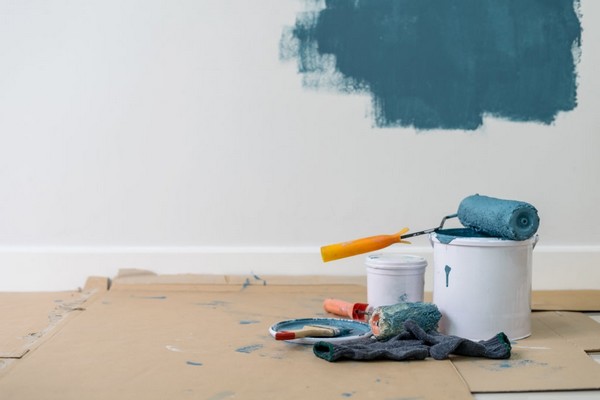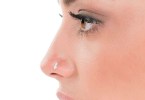Tips for Healthy Painting – Doing paint jobs at home are quite enjoyable, right? From the last decade, a large number of people have started to paint their furniture, doors, windows, walls, ceilings, etc. to save the money of hiring professional painters. People get to learn DIY painting techniques through articles from several magazines and online websites. And, truly speaking, those articles help them to get a professional level work result.

But here is a catch. Most of us only learn how to paint using brushes, rollers, or sprayers. Often, they don’t know how to keep themselves and their surroundings healthy and clean from the side-effects of painting. So, some experienced painters have thought to give their suggestions on how to stay safe from the bad effects of painting.
Here, I am going to tell you the effective 8 tips for healthy painting divided into three parts, to help you know when you how you have to take those steps for your safety.
The Way You Do Healthy Painting
To ease your work, we can divide the whole thing into three sections:
- Before painting safety,
- During painting safety,
- And After painting safety.
I have combined my experience and experts’ guiding together to make a clear guideline for you. You can easily get to know what you need to do in which time through the description below. So, without any further delay, let’s go to the main discussion.
Before You Paint
Just to make sure everything goes fine, here are some steps that can help you to start painting safely.
Select the Best Paint Option
There are various types of paints these days. But I have found out that only latex and other water-based paints with natural element pigments ensure your safety. These types feature less VOC’s that is quite awesome.
Paints that smell less is also a good option. If you also intend to buy a stripper solution, then I think you need to get an alcohol-based stripper.
Apart from all these, you can buy non-toxic paint thinner if you need to have a good mixture.
Avoid Mixing Paints with Your Hands
Mixing paints with bare hands is not a good decision at all. Many painters suggest using gloves while you put your hands in the paint. But I don’t think it can work well.
- 4 Fresh Trends in Interior Painting
- 10 Amazing Things About Painting Services In San Francisco
- House Painting Rules You Should Never Break
If you need to make a solution using paint and thinner or stripper and another solvent, you can use your paintbrush or a stick to stir properly. Keeping a fair distance with the paint is wise thinking.
Cover the Surroundings
You need to cover other stuff around the surface to keep your DIY project clean and perfect. There are different things that you can use.
You can use waste cloths or old newspapers to cover your floor, furniture, and other stuff. Nowadays, you can also buy paint tape from the market at a cheap rate. You can tape the borders of the surface to mark the exact location where you need to put paint coats. Such tapes are quite easy to remove after painting.
When You Paint
Your main task begins when you start to put paint coats. Here are some safety facts.
Keep your Body Protected
Protective gears such as apron, gloves, masks, goggles should be worn when you are painting. Goggles protect your eye from paint particles hurting your eyes. A mask can keep you away from bad paint odor and unwanted gases. Besides, you can put something on your ears when you are sanding on your walls.
Maintain a Good Distance
You should not go closer to the surface you are painting. You can use a stick to attach rollers or paintbrushes so that you can reach the wall of the ceiling without going near.
If you intend to use a sprayer gun, you can keep a distance of at least 20 cm between you and the surface. But be careful while using a sprayer as it can spread paint on other things apart from the surface.
Don’t Turn on Your AC but Ensure Ventilation
Turning on the Air conditioner can be an obstacle to the necessary ventilation. So, it is better to use a fan for a while if you need it.
Keeping the proper airflow in your room can help you in breathing well. As you are wearing a musk and new paint coats can create gases, you need to keep air coming from the outside.
Use Good Tools
Having good sandpaper, mid-soft brushes, firm rollers, and highest-rated paint sprayers ease your job. Using good rollers or sprayers can eliminate the possibility of paint splitting around. So, you can do a clean and hustle-free work with quality tools.
Buying quality tools might require a healthy budget. But you need to consider this as a must. Apart from these tools, you may also need to buy a precise ladder that can help you reach the top parts of your walls or ceilings.
After You Paint
There is nothing much left to follow after you have finished your job except leaving the room for a while.
Leave the Room Empty for a While
If you are done with painting, for now, leave the room or place with your tools for at least 24 hours. Within that period, bad odor and gases can go away. But make sure you have kept windows and ventilation fan open while you leave the place.
When You can’t Paint
If you are a pregnant woman, then painting is not your job. You should avoid indoor painting even if you are suffering from asthma or allergy. Moreover, you can have a helping hand to do sanding or paint mixing if you are allergic to paint particles.
Conclusion
These are some of the points to make you safe from the bad effects of painting. But these eight points are not enough. You also have to be cautious while doing any sort of paint job. Also, you need to determine the level of safety, depending on the type of work.
Buying a less or zero VOC paint and using a standard brush, roller, or sprayer is mandatory no matter you are painting indoor or outdoor. The other six facts are also vital, but you can skip the last one when you are painting outdoor walls or fences. So, that’s all for today and hope you stay safe doing painting.






